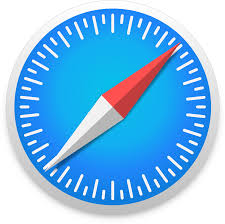Contents
Adding CSS margins
The CSS margin property allows you to add extra space around the chosen element:
Providing sufficient spacing around menu items, scrollbars, and other HTML elements clarifies and improves the overall structure of the page. Thus, CSS margins make it easier for the user to navigate and interact.
Note: don't get confused with CSS
marginvspadding:marginsets the spacing outside the borders, and padding does so within the element.
Setting CSS margin values
When using the CSS margin property, you can define up to four values:
margin: value1 value2 value3 value4;
Based on how many values you specify, the property assumes the remaining values using different logic. Understand how to define the CSS margin order by reviewing the table below.
| Syntax | Example | Explanation |
|---|---|---|
| One value | margin: 5px; | All four margins are the same. |
| Two values | margin: 5px 10px; | The first value defines the top and bottom margins. The second value defines the left and right margins. |
| Three values | margin: 5px 10px 15px; | The first value defines the top margin. The second value defines the left and right margins. The third value defines the bottom margin. |
| Four values | margin: 5px 10px 15px 20px; | The first value defines the top margin. The second value defines the right margin. The third value defines the bottom margin. The fourth value defines the left margin. |
You can define the width for CSS margin in either length units (e.g., pixels) or percentages (in relation with the container block). The default value is 0 0 0 0, which represents no CSS margin.
Tip: you can also use the keyword
auto, in which case the browser will select the margin for the HTML element.

- Easy to use with a learn-by-doing approach
- Offers quality content
- Gamified in-browser coding experience
- The price matches the quality
- Suitable for learners ranging from beginner to advanced
- Free certificates of completion
- Focused on data science skills
- Flexible learning timetable

- Simplistic design (no unnecessary information)
- High-quality courses (even the free ones)
- Variety of features
- Nanodegree programs
- Suitable for enterprises
- Paid Certificates of completion

- A wide range of learning programs
- University-level courses
- Easy to navigate
- Verified certificates
- Free learning track available
- University-level courses
- Suitable for enterprises
- Verified certificates of completion
Manipulating each CSS margin individually
CSS margin is actually a shorthand for four subproperties:
margin-topmargin-rightmargin-bottommargin-left
If you don't want to use the shorthand or just want to be extra sure about the CSS margin order, you can also use the subproperties on their own.
To apply margin to the top of an element, use margin-top:
To apply margin to the right of an element, use margin-right:
To apply margin to the bottom of an element, use margin-bottom:
To apply margin to the left of an element, use margin-left:
Browser support

Chrome

Edge

Firefox

IE

Opera

Safari
Mobile browser support

Chrome

Firefox

Opera

 HTML
HTML  CSS
CSS  PHP
PHP  JavaScript
JavaScript  SQL
SQL  Bootstrap
Bootstrap  Solidity
Solidity  jQuery
jQuery  Git
Git  Chrome DevTools
Chrome DevTools  C++
C++  Python
Python 



